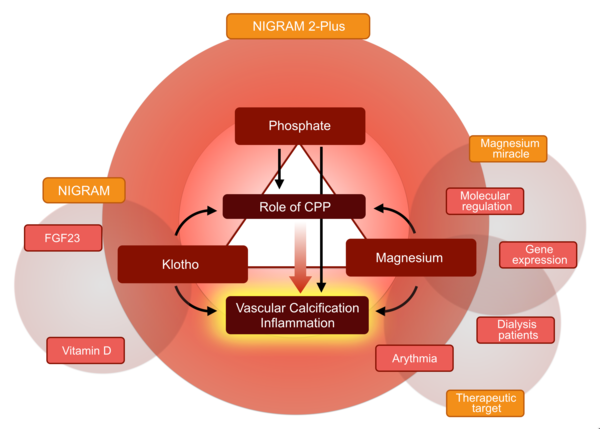Nanocrystal formation in humans contributes to, while magnesium retards cardiovascular disease
Calciprotein particles (CPP1) are formed in physiology to buffer excess of calcium and phosphate and initially amorphic and non-toxic. In chronic kidney disease this buffer system has decreased capacity and is overwhelmed, leading to toxic crystalline particles (CPP2) that induce vascular calcification and dysfunction. In this translational project molecular mechanisms are explored and the protective effects of magnesium demonstrated, both in vitro, in animal model and in human conditions.
These findings reveal an entirely novel aspect of regulation and modification of mineral homeostasis, the dysregulation of which is acknowledged as key driver of human cardiovascular disease, the single most frequent cause of death in the general population and in particular those with diabetes and early stages of kidney disease.. Currently, the therapeutic armamentarium is limited and does not target these novel aspects. Since this regulation is both measurable, quantifiable and modifiable.
In vitro, the effects of CPP1 and CPP2 were studied and showed that in endothelial cells (the inner lining of all human blood vessel) inflammation was induced. Moreover, calcification was induced. In these experiments, higher levels of magnesium were highly protective against these toxic effects. This was confirmed in animal models, were higher magnesium intake in diets prevented vascular disease of kidney failure, by retarding CPP toxicity. Finally in human studies, the key role of CPP’s was shown and the protective effects of magnesium on this pathomechanism confirmed.
These findings, including the formation rate of CPP2 and therapeutic interventions such as magnesium modification, are now set to be tested in clinical trials as a final step to clinical implementation.







